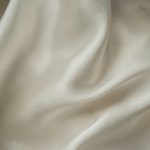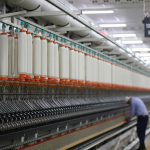If you need top-tier Kevlar fabric, leading manufacturers in China and the USA deliver unmatched strength and innovation. China’s Anhui Anqing Kevlar and Hengyi Group offer large-scale, quality-driven production, while U.S. pioneers like DuPont and Honeywell focus on cutting-edge weaving and eco-friendly processes. Both dominate sectors from aerospace to sports gear. Plus, emerging European and Asian firms push smart and sustainable textiles. Exploring their capabilities reveals insights into global competition and future trends shaping Kevlar’s market.
Table of Contents
Key Takeaways
- China leads in large-scale Kevlar production with top manufacturers like Anhui Anqing Kevlar and Hengyi Group focusing on quality and R&D.
- US manufacturers such as DuPont, Teijin, and Honeywell pioneer innovative, sustainable Kevlar fabrics for defense, aerospace, and ballistic protection.
- Advanced weaving technologies, rigorous quality controls, and certifications like ISO 9001 and NIJ ensure high Kevlar fabric standards globally.
- Market trends emphasize sustainable production, lighter stronger blends, and digital integration to meet aerospace, automotive, and sports industry demands.
- Emerging players in Europe and Asia focus on innovation, smart textiles, and sustainability, while the industry faces challenges like raw material costs and regulatory compliance.
Overview of Kevlar Fabric and Its Applications
Although you mightn’t see Kevlar fabric every day, it plays an essential role in many industries due to its exceptional strength and durability.
When you handle Kevlar, you’re working with a material five times stronger than steel by weight. This makes it perfect for protective gear like bulletproof vests and helmets, ensuring your safety in dangerous situations.
You’ll also find Kevlar used in aerospace for lightweight, high-strength components, improving fuel efficiency and performance.
If you’re into sports, Kevlar enhances equipment such as racing sails and bicycle tires, offering durability without added weight.
Even in automotive manufacturing, Kevlar helps reinforce tires and brake pads.
Understanding its versatility shows why Kevlar fabric is a game-changer across various fields.
Leading Kevlar Fabric Manufacturers in China
You’ll find some of the top Kevlar fabric producers right here in China, known for their strong manufacturing capabilities.
These companies are constantly evolving, pushing market trends and innovations forward.
Let’s look at who they’re and what sets them apart in the global Kevlar industry.
Top Chinese Kevlar Producers
When you explore the global Kevlar market, China’s leading producers stand out for their innovation and scale. Companies like Anhui Anqing Kevlar Co. and Hengyi Group have established themselves as reliable sources for high-quality Kevlar fibers and fabrics.
You’ll find they focus on meeting diverse industry needs, from protective gear to automotive applications. These producers invest heavily in R&D to enhance fiber strength and durability, ensuring you get cutting-edge materials.
Their extensive manufacturing networks allow for consistent supply and competitive pricing, which is essential for your business. By partnering with these top Chinese Kevlar producers, you tap into a blend of advanced technology and large-scale production capacity, helping you stay competitive in the demanding global market.
Manufacturing Capabilities Overview
Since leading Chinese Kevlar fabric manufacturers prioritize innovation and scale, they’ve built impressive production capabilities to meet diverse industry demands.
When you partner with these manufacturers, you benefit from advanced weaving technologies that guarantee consistent fabric strength and durability. They operate large-scale facilities equipped with automated looms, enabling high-volume output without compromising quality.
You’ll find their quality control processes are rigorous, employing real-time monitoring to catch defects early. Plus, their flexible production lines let you customize fabric specifications, from thickness to weave patterns, to fit your exact needs.
These manufacturers also maintain strong supply chain networks, assuring reliable raw material sourcing and timely delivery. Overall, you can trust their manufacturing capabilities to support both small projects and large industrial orders efficiently.
Market Trends and Innovations
Three key trends are shaping the market for Kevlar fabric manufacturers in China today.
First, you’ll notice a strong push toward sustainable production methods, as manufacturers adopt eco-friendly fibers and energy-efficient processes.
Second, innovation in fabric technology is accelerating, with companies developing lighter, stronger Kevlar blends tailored for diverse applications—from automotive to personal protection.
Third, digital integration plays a big role; smart manufacturing systems enhance quality control and speed up delivery times.
If you’re sourcing Kevlar fabrics, you’ll benefit from these advances, gaining access to higher-performance materials at competitive prices.
Chinese manufacturers continue to invest heavily in R&D, so staying updated on their latest breakthroughs can give you a real edge in selecting the best Kevlar products for your needs.
Key Kevlar Fabric Producers in the United States
You’ll find that leading US Kevlar brands are pushing the boundaries with advanced manufacturing techniques.
These producers focus on innovation to enhance fabric strength and durability.
Let’s explore how these stateside companies are shaping the Kevlar market.
Leading US Kevlar Brands
When you look into the Kevlar fabric market in the United States, a few key brands stand out for their innovation and quality.
DuPont is the pioneer behind Kevlar, setting the standard with its durable, high-performance fibers widely used in protective gear and industrial applications.
Another notable brand is Teijin, which, although originally Japanese, has a strong US presence offering advanced Kevlar fabrics tailored for defense and aerospace sectors.
Additionally, companies like Honeywell provide specialized Kevlar variants focusing on ballistic protection and high-strength composites.
These brands have earned your trust by consistently delivering reliable, cutting-edge Kevlar fabrics that meet stringent US industry requirements.
If you’re sourcing Kevlar fabric domestically, these leaders are your go-to for performance and dependability in critical applications.
Manufacturing Innovations Stateside
Although Kevlar’s origins trace back decades, manufacturers in the United States have continuously pushed the boundaries of its production.
When you explore American innovation, you’ll see advancements in weaving techniques that enhance fabric strength and flexibility. Companies employ cutting-edge machinery to produce lighter, more durable Kevlar variants, meeting evolving industry demands.
You’ll also find efforts to improve sustainability, using eco-friendly processes without compromising quality. These innovations help you access Kevlar fabrics tailored for diverse applications—from body armor to aerospace.
By investing in research and development, US manufacturers guarantee you get top-tier materials that balance performance and reliability.
If you’re seeking Kevlar fabrics with state-of-the-art features, exploring these stateside producers will connect you with the industry’s forefront.
Innovations in Kevlar Fabric Technology
As technology advances, Kevlar fabric manufacturers have pushed the boundaries of strength and flexibility to meet evolving industry demands.
You’ll find innovations that not only improve durability but also enhance comfort and adaptability.
Here are four key advancements shaping Kevlar fabric technology:
- Nanotechnology Integration – Embedding nanoparticles for increased tensile strength without added weight.
- Hybrid Weaves – Combining Kevlar with other fibers like carbon or graphene for superior performance.
- Moisture-Wicking Treatments – Applying coatings that keep the fabric dry, boosting comfort during extended use.
- 3D Fabric Structures – Developing three-dimensional weaves that provide better impact resistance and breathability.
These innovations make Kevlar fabrics more versatile, empowering you to rely on them across diverse applications.
Market Demand and Growth Drivers for Kevlar Fabric
You’re seeing stronger demand for Kevlar fabric as industrial applications keep expanding across sectors like automotive and aerospace.
Stricter safety regulations are pushing companies to adopt more protective materials, boosting Kevlar’s appeal.
Understanding these growth drivers helps you grasp why the market is evolving rapidly.
Industrial Applications Expansion
When industries demand materials that combine strength, durability, and lightweight properties, Kevlar fabric stands out as a top choice.
You’ll find its applications expanding rapidly across diverse sectors, driven by evolving needs and technological advances. Kevlar’s versatility lets you use it in areas requiring exceptional performance without added bulk.
Here are key industries where Kevlar fabric is making significant inroads:
- Aerospace: Reinforcing aircraft components to reduce weight and improve fuel efficiency.
- Automotive: Enhancing crash protection and durability in vehicle parts.
- Sports Equipment: Boosting safety and performance in helmets, gloves, and gear.
- Electronics: Providing heat resistance and structural support in devices.
As you see, Kevlar’s industrial applications keep growing, meeting your demands for cutting-edge materials.
Safety Regulations Impact
Although safety regulations vary by industry and region, they consistently drive the demand for high-performance materials like Kevlar fabric.
When you look at sectors such as law enforcement, military, and manufacturing, you’ll see strict standards for protective gear. These rules push manufacturers to use Kevlar because it offers exceptional strength and cut resistance, helping you meet compliance while ensuring safety.
As regulations tighten, especially in hazardous work environments, your need for reliable, certified materials grows. Plus, global awareness about worker protection means more industries adopt Kevlar-based solutions.
If you’re involved in product development or procurement, understanding these regulations helps you anticipate market trends and invest wisely.
Ultimately, safety mandates don’t just protect people—they fuel Kevlar fabric’s expanding role worldwide.
Quality Standards and Certifications in Kevlar Fabric Production
Since quality directly impacts the performance and safety of Kevlar fabrics, manufacturers must adhere to strict standards and obtain relevant certifications.
You want to guarantee the Kevlar you choose meets recognized benchmarks that assure strength, durability, and reliability.
Here are key certifications to look for:
- ISO 9001 – Confirms consistent quality management systems.
- ASTM Standards – Defines material performance and testing methods.
- NIJ Certification – Validates ballistic resistance for protective gear.
- OEKO-TEX Standard 100 – Guarantees textiles are free from harmful substances.
Competitive Landscape and Strategic Partnerships
Understanding the competitive landscape helps you identify key players driving innovation and growth in Kevlar fabric manufacturing.
Industry leaders like DuPont in the USA and major Chinese manufacturers fiercely compete by investing heavily in R&D and production efficiency.
You’ll notice strategic partnerships often play an essential role, enabling companies to expand market reach and enhance product offerings.
For example, collaborations between fiber producers and end-use manufacturers streamline development and accelerate innovation.
You should also consider alliances that focus on sustainability and advanced material applications, as they shape future industry trends.
Emerging Kevlar Fabric Manufacturers in Europe and Asia
While established giants like DuPont and key Chinese manufacturers dominate the Kevlar fabric market, new players in Europe and Asia are quickly making their mark.
Established leaders like DuPont face emerging European and Asian innovators reshaping the Kevlar fabric market.
You’ll find these emerging manufacturers focusing on innovation, sustainability, and niche applications to stand out. As you explore this landscape, consider:
- Germany’s advanced weaving techniques enhancing fabric strength and flexibility.
- South Korea’s integration of Kevlar with smart textiles for wearable tech.
- Italy’s emphasis on eco-friendly production methods reducing environmental impact.
- India’s growing capacity in producing cost-effective Kevlar fabrics for automotive uses.
Challenges Faced by Kevlar Fabric Manufacturers Globally
Although Kevlar fabric manufacturers have made significant advancements, they still face several challenges that can impact production and market growth. You need to navigate high raw material costs, stringent regulatory standards, and intense global competition. Managing supply chain disruptions and maintaining consistent quality also demand your constant attention.
| Challenge | Impact |
|---|---|
| Raw Material Costs | Increases production expenses |
| Regulatory Compliance | Delays product launches |
| Supply Chain Disruptions | Causes production delays |
| Global Competition | Pressures pricing strategies |
Future Trends and Opportunities in Kevlar Fabric Industry
Steering through challenges like high costs and supply chain issues has pushed Kevlar fabric manufacturers to innovate and explore new avenues.
Navigating high costs and supply chain hurdles drives Kevlar fabric makers toward innovation and new opportunities.
You’ll see the industry focusing on enhancing material performance while reducing production expenses. As you look ahead, consider these emerging trends and opportunities:
- Sustainable Production: Using eco-friendly raw materials and recycling processes to meet growing environmental demands.
- Advanced Composites: Integrating Kevlar with other fibers for stronger, lighter protective gear.
- Smart Textiles: Embedding sensors for health monitoring and enhanced safety applications.
- Expanded Markets: Tapping into automotive, aerospace, and wearable tech sectors for broader applications.
Frequently Asked Questions
What Is the Environmental Impact of Kevlar Fabric Manufacturing?
You should know Kevlar manufacturing consumes energy and uses hazardous chemicals, which can harm the environment if not managed properly. Waste disposal and emissions are concerns, but recycling efforts and regulations help reduce its environmental footprint.
How Is Kevlar Fabric Recycled or Disposed of Safely?
You can recycle Kevlar by repurposing it into new composite materials or safely dispose of it through specialized incineration facilities that minimize toxic emissions. Avoid landfills since Kevlar is non-biodegradable and can persist in the environment.
What Are the Health Risks for Workers Handling Kevlar Fibers?
Worried about health risks when handling Kevlar fibers? You might face skin irritation or respiratory issues if fibers become airborne. Always wear protective gear and guarantee proper ventilation to keep yourself safe and healthy on the job.
How Does Kevlar Fabric Compare in Cost to Other Protective Materials?
You’ll find Kevlar fabric generally costs more than standard textiles but less than some high-end materials like carbon fiber. Its excellent strength-to-weight ratio often justifies the higher price for protective gear and specialized uses.
Can Kevlar Fabric Be Customized for Specific Industrial Uses?
You probably think Kevlar fabric comes one way only, but you’d be surprised—it’s totally customizable for your industrial needs. You can tweak thickness, weave, and coatings to suit your exact protection requirements.
- Does Chiffon Fabric Stink - July 15, 2025
- Does Chiffon Fabric Affect the Economy - July 15, 2025
- Does Cotton Fabric Have a Nap - July 15, 2025





